Bodywork consumables
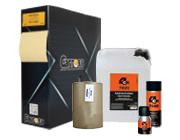
Our bodywork paint consumables
-
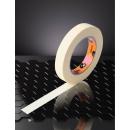 1126.1850Premium 80° Masking tape18mm x 50m white - 1 box
1126.1850Premium 80° Masking tape18mm x 50m white - 1 box -
 1126.3650Premium 80° Masking tape38mm x 50m white - 1 box
1126.3650Premium 80° Masking tape38mm x 50m white - 1 box -
 1126.4850Premium 80° Masking tape50mm x 50m white - 1 box
1126.4850Premium 80° Masking tape50mm x 50m white - 1 box -
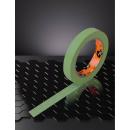 1131.1850Masking tape 90°C18mm x 50m - HYDRO special
1131.1850Masking tape 90°C18mm x 50m - HYDRO special -
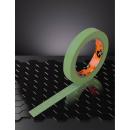 1131.245090° Masking tapegreen 24 x 50m - HYDRO special
1131.245090° Masking tapegreen 24 x 50m - HYDRO special -
 1131.365090° Masking tape36mm x 50m - special HYDRO
1131.365090° Masking tape36mm x 50m - special HYDRO -
 1131.4850Masking tape 90°C50mm x 50m - special HYDRO
1131.4850Masking tape 90°C50mm x 50m - special HYDRO -
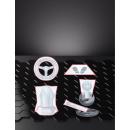 1143.0005Protection kitSpecial interior 1 kit
1143.0005Protection kitSpecial interior 1 kit -
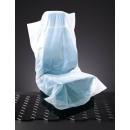 1145.0500Opaque seat cover82x127cm
1145.0500Opaque seat cover82x127cm -
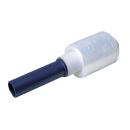 1146.0001Flying cover dispenser1 unit
1146.0001Flying cover dispenser1 unit -
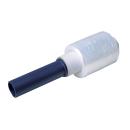 1146.0150Flying cover12.5x150m
1146.0150Flying cover12.5x150m -
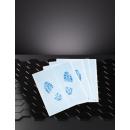 1147.0500Floor protection mat38x50cm
1147.0500Floor protection mat38x50cm -
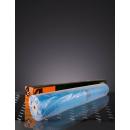 1148.xxxxMasking filmXXL
1148.xxxxMasking filmXXL -
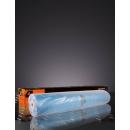 1151.4xxxMasking film light110°C
1151.4xxxMasking film light110°C -
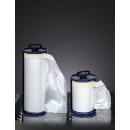 1152.0xxxMasking film33m with tape included
1152.0xxxMasking film33m with tape included
︾
Bodywork consumables: how to repair car bodywork?
In the vast field of car repair and restoration, the use of bodywork consumables plays a crucial role in achieving professional, long-lasting results. These consumables encompass a diverse range of tools, materials and products needed throughout the repair process, from Sanding to Masking, from paint booth protection to overall vehicle protection, including bodywork staples, plastic repair kits and bodywork adhesives.
Sanding the bodywork is one of the first steps in the restoration process. It is a meticulous process designed to smooth bodywork surfaces to remove defects, imperfections and old coats of paint. The consumables associated with bodywork sanding include a variety of abrasive papers of different grits, sanding blocks, electric sanders and accessories that make it easier for craftsmen to work accurately and efficiently.
Bodywork masking is a crucial step before applying paint. The consumables used in masking include special masking tapes, protective sheets, adhesive films and covers. These products ensure that only the areas intended to be painted are exposed, ensuring a clean, precise finish with no smears or splashes.
Protecting the spray booth is a major concern when spraying paint. Consumables such as paint booth filters, protective suits, breathing masks and gloves are essential to ensure worker safety and paint quality by preventing contamination of the working environment.
The overall protection of the vehicle is also an important aspect. Special protective covers for the seats, steering wheel and dashboard help prevent unwanted paint stains inside the vehicle. Protective tarpaulins and films are used to protect the bodywork and windows from splashes and splatters of paint.
Bodywork tools include a variety of instruments specially designed for working on the bodywork. Bodywork hammers, stacks and stacks of vices, riveting pliers and rivet extractors are all part of a bodywork professional's arsenal. These tools guarantee precise and efficient work when repairing structural and cosmetic damage.
Bodywork staples are used to repair damaged areas where welding is not possible or practical. These small metal parts, often used in conjunction with special pliers, hold bodywork parts together while preserving structural integrity.
Plastic repair kits are essential consumables for restoring damaged plastic parts. Composed of special resins, Fiberglass reinforcements and the appropriate tools, these kits enable effective repair of bumpers, mirrors and other plastic components without the need for costly replacement.
Finally, bodywork adhesives are used to assemble and repair components without the need for welding. These special adhesives offer exceptional adhesion to a variety of surfaces, making it easy to repair metal, plastic and Fiberglass parts.
In conclusion, bodywork consumables are essential elements in ensuring the success of car repair and restoration projects. From bodywork sanding to masking, from paint booth protection to overall vehicle protection, from bodywork tools to staples, plastic repair kits and bodywork adhesives, these products are indispensable partners for bodywork professionals seeking to achieve high-quality, long-lasting results.
The bodywork sanding process often raises many questions for those embarking on the repair or restoration of a vehicle. Here are some of the most frequently asked questions about bodywork sanding, with answers to shed some light on this complex subject.
Why is bodywork sanding necessary before painting?
Sanding is essential to create a smooth surface by removing irregularities, imperfections and old coats of paint. A well-prepared surface guarantees optimum adhesion of the new paint, ensuring a long-lasting, attractive result.
What types of sanding paper are used for bodywork sanding?
Sanding papers for bodywork sanding are available in a range of grits, from coarse (for removing paint) to fine (for polishing the surface). Commonly used grits include 80, 120, 240 and 400.
How do I choose the right sander for bodywork sanding?
The choice of sander depends on the size of the surface to be sanded and the nature of the work. An orbital sander is often used for large surfaces, while a belt sander is ideal for narrower areas. An eccentric sander can offer a balance between precision and efficiency.
What is the recommended method for avoiding scratches during bodywork sanding?
Use a cross-sanding technique, changing the direction of sanding between each step. This reduces the risk of creating visible scratches. In addition, make sure your Sanding equipment is clean and in good condition.
Can bodywork sanding be done by hand or does it always require an electric sander?
Sanding by hand is possible, but it can be time-consuming and tiring. Electric sanders offer greater efficiency. However, some delicate areas may require hand sanding for more precise control.
How do I repair deep scratches during bodywork sanding?
Deep scratches may require the application of body filler to fill in the defects. It is important to follow the putty manufacturer's instructions for best results.
When should I use water during bodywork sanding?
The use of water, known as wet sanding, is common to reduce dust and cool the surface. However, this depends on the type of sanding paper used and the preferences of the professional.
What is the difference between dry sanding and wet sanding?
Dry sanding is carried out without the addition of water, whereas wet sanding uses water to lubricate the surface and reduce dust. The choice depends on the material, the sanding paper used and personal preference.
How long should I wait after Sanding before applying Paint?
We recommend that you allow the sanded surface to dry completely before applying the paint. The time may vary depending on weather conditions and the products used, but generally a few hours to a day is required.
What finishing products are recommended after bodywork sanding?
After Sanding, the application of a Paint primer is often recommended to ensure optimum adhesion of the final paint. It is also crucial to thoroughly clean the surface to remove any residual sanding dust.
In conclusion, bodywork sanding raises a variety of questions, and the answers often depend on the specific nature of the project and individual preferences. A good understanding of the techniques and consumables associated with bodywork Sanding is essential to achieving professional and satisfactory results.
Bodywork consumables: Sanding, Masking: everything you need to know about bodywork repairs
The consumables offered by Carross will enable you to perform a wide range of versatile tasks on your bodywork paintwork. Products like WD-40 can be used for a wide range of tasks, while our sheet metal category is perfect for removing dents from your car.
The Carross consumables range also includes Sanding equipment, Masking tapes, Staples, Plastic repairs...
Below is a summary of all our bodywork consumables categories!
Bodywork sanding
Bodywork sanding is a process that produces a smooth, clean bodywork surface. It's a very important step in making a success of your bodywork paintwork, whether it's for a simple touch-up or a complete overhaul of the car's bodywork.
Whatever your sanding needs, Carross has the solution. Whether you need discs, abrasive rollers, stripping tools, sanding blocks, sanding guides, sanding belts... Check out our Sanding page!
Masking for bodywork paintwork
Successful bodywork paintwork is clean and neat. To get the best results without smearing, masking materials are essential. Carross stocks a wide range of masking products to get the job done as accurately as possible.
In addition to the traditional masking tapes, you'll find the best foam rollers or masking nets that will prevent any drips or fogs from invading your work!
Bodywork sheet metal
How do I repair a dent in my bodywork? Click here for the answer.
You'll find all our dent removal tools, for removing dents from your car using bodywork suction cups. As well as removing a dent from a car, you'll also find sets of milling cutters and other tools for your windscreen.
Bodywork adhesives
If you want to find the right adhesives for your bodywork parts, Carross stocks the best adhesives, from the 4CR brand. You can find glue in spray cans or tubes.
All other bodywork products and equipment on Carross.eu
Find all the other bodywork consumables and other bodywork products for your workshop on Carross.eu.
Carross guide to our body repair products
Carross offers you a selection of body repair products, and also shows you what they are for and how to use them. You can find all our technical advice on this page.